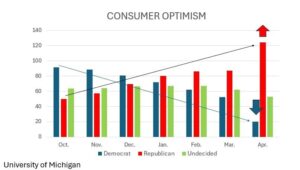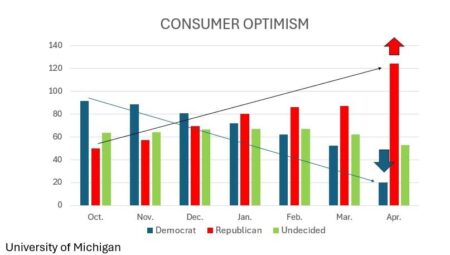Jochen Schwenk is CEO of Crisis Control Solutions LLC & Schwenk AG, an expert in risk and crisis management for the automotive industry.
In boardrooms around the world, executives are still bracing for “the big one”: the cyberattack, the recall or the headline-making scandal. But while they’re preparing for an earthquake, their companies are bleeding from paper cuts.
Welcome to the era of micro-crises—those frequent, seemingly minor disruptions that don’t make headlines but drain time, resources and energy. A supplier misses a delivery. A key team member unexpectedly resigns. A critical file goes missing during a product launch. Taken alone, none of these issues looks catastrophic. But stacked together over days, weeks and quarters, they can become the silent killers of momentum and morale.
This isn’t a hypothetical. It’s already happening. And in my experience, most companies are wildly underprepared for it.
Death By A Thousand Cuts
For years, businesses focused their crisis planning on major threats—the once-in-a-decade events. And while those still matter, they’re no longer the only danger. In today’s fast-moving, interconnected world, it’s often the accumulation of small problems that brings a company to its knees.
This idea isn’t new. In the 1930s, industrial safety expert Herbert Heinrich introduced what’s now known as Heinrich’s Law. He suggested that for every accident that causes a serious workplace injury, there were 29 that caused minor injuries and 300 that caused no injuries. In other words, major disasters don’t happen in a vacuum—they’re generally preceded by dozens or even hundreds of warning signs.
The same applies in business today. That missed shipment? That system glitch? That off-brand tweet? These aren’t isolated events. They’re signals. And if you’re not paying attention, they can quietly compound until the big crisis inevitably arrives.
I’ve seen it firsthand. In my work helping Fortune 500 companies manage supply chain disruptions, geopolitical risk and operational breakdowns, it’s rarely the “meteor” that causes the most damage. It’s the internal delay no one acted on. It’s the vendor’s financial red flag that went unnoticed or the internal miscommunication that snowballed. Left unaddressed, the micro-crisis often becomes the mega-crisis.
Outdated Plans For A New Reality
So why do so many companies get blindsided? Because they’re still using a crisis management playbook built for another era. Often, there is a plan somewhere—but it’s outdated, overly complex and collecting dust in a digital drawer. It covers hurricanes and hostile takeovers but not influencer backlash or a three-day production halt caused by a bankrupt sub-supplier.
Many executives I speak with believe they’re prepared because they’ve invested in dashboards and systems. But when the unexpected hits, those tools aren’t enough. Data can show you something’s wrong—but it can’t tell you what to do next. That’s where people, preparation and clarity must take over.
To thrive in this new reality, companies should develop modern, modular playbooks. These should not be static documents—they should be living systems that can be activated at a moment’s notice.
Here’s what a 2025-ready playbook includes:
• Risk Radar: Create a real-time grid of your most likely and impactful threats. Use open-source intelligence (OSINT), not just gut instinct.
• Decision Tree: Define clear roles, responsibilities and escalation thresholds. There should be no second-guessing in chaos.
• Communication Blueprint: There should be preapproved internal and external messaging for key scenarios.
• Action Checklists: Drill-down steps by role and function. They should be fast, clear and adaptable.
• After-Action Review Protocol: Every crisis, even the small ones, must inform future updates.
Speed Over Size
Responding to today’s disruptions doesn’t require a 300-page manual or a six-month engagement. In fact, as someone whose company builds these playbooks, I’ve seen that the best crisis response systems are lean, simple and fast. What matters isn’t how detailed your plan is—it’s how quickly people can act on it.
In high-pressure environments—like the military special operations units I once served in—we trained relentlessly for this. Because when stress hits, you don’t rise to the occasion. You fall to the level of your preparation.
The same is true in business. When something breaks, the clock starts ticking. The companies that succeed are the ones that move. They know their first three steps. They communicate clearly. And they don’t waste time arguing over who’s in charge.
Acting Before The Storm
The businesses that will thrive in 2025 and beyond won’t be the ones that avoid every crisis. That’s impossible. They’ll be the ones who move faster, adapt quicker and stay grounded under pressure.
That starts with recognizing that micro-crises are not random noise—they’re your early warning system. The companies that ignore them will find themselves constantly putting out fires. The ones that prepare for them will stay focused, aligned, and resilient—no matter what the world throws their way.
If your company doesn’t yet have a usable crisis playbook—not just for the big stuff, but for the small daily disruptions—it’s time to change that. A few simple, actionable plans can be the difference between a momentary setback and a total breakdown.
When people know what to do, they don’t panic. They perform. That’s the real power of preparation.
Forbes Business Council is the foremost growth and networking organization for business owners and leaders. Do I qualify?
Read the full article here











